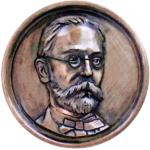Current issue
Online first
Special issues
Archive
About the Journal
Editorial Board
Editorial Council
Reviewers
Editorial guidelines
Publication ethics
Guidelines for reviewing
Remarks on “ghostwriting”
Copyrights and Open Access rule
GDPR Privacy Notice – for the authors of articles sent for publication in the "Komunikaty Mazursko-Warmińskie ("Masuro-Warmian Bulletin")
Contact
Price list
Commemorating the figure of Nicolaus Copernicus
in the Polish People’s Republic period as an element
of historical policy pursued after 1945
1
Instytut Północny im. Wojciecha Kętrzyńskiego w Olsztynie, Polska
Submission date: 2023-11-09
Final revision date: 2023-12-08
Acceptance date: 2023-12-19
Online publication date: 2024-03-15
Publication date: 2024-03-15
Corresponding author
Ryszard Tomkiewicz
Instytut Północny im. Wojciecha Kętrzyńskiego w Olsztynie, Partyzantów 87, 10-402, Olsztyn, Polska
Instytut Północny im. Wojciecha Kętrzyńskiego w Olsztynie, Partyzantów 87, 10-402, Olsztyn, Polska
KMW 2023;323(4):591-606
KEYWORDS
Historical/memory policypropaganda of the Polish People’s Republicperiodcelebration of anniversaries related to the figure of NicolausCopernicusOlsztynFrombork
TOPICS
ABSTRACT
In the post-1945 politics of memory, the figure of Copernicus was used in the context of the an-
ti-German narrative to confirm the eternal ties with the Polish state of the lands annexed after
the war. There was a specific pattern to it. While marginalising the fact that he was a cler-
gyman, his contribution to world science was praised, and his Polishness and his ability to
oppose the Teutonic Knights, identified with the Germans, were emphasised. Therefore, he
was mentioned next to the defeaters of the Teutonic Knights from Grunwald, the Red Army,
and the Polish Army, which defeated the Third Reich as a united Slavic world. The conclusion
was that both Copernicus centuries ago and during World War II, allied troops led by the USSR were fighting with Germany for the same goals, including restoring areas with Piast origins to Poland. Despite using the figure of Copernicus in the implemented memory policy, the astronomer
invariably enjoyed great sympathy in Polish society.
We process personal data collected when visiting the website. The function of obtaining information about users and their behavior is carried out by voluntarily entered information in forms and saving cookies in end devices. Data, including cookies, are used to provide services, improve the user experience and to analyze the traffic in accordance with the Privacy policy. Data are also collected and processed by Google Analytics tool (more).
You can change cookies settings in your browser. Restricted use of cookies in the browser configuration may affect some functionalities of the website.
You can change cookies settings in your browser. Restricted use of cookies in the browser configuration may affect some functionalities of the website.




